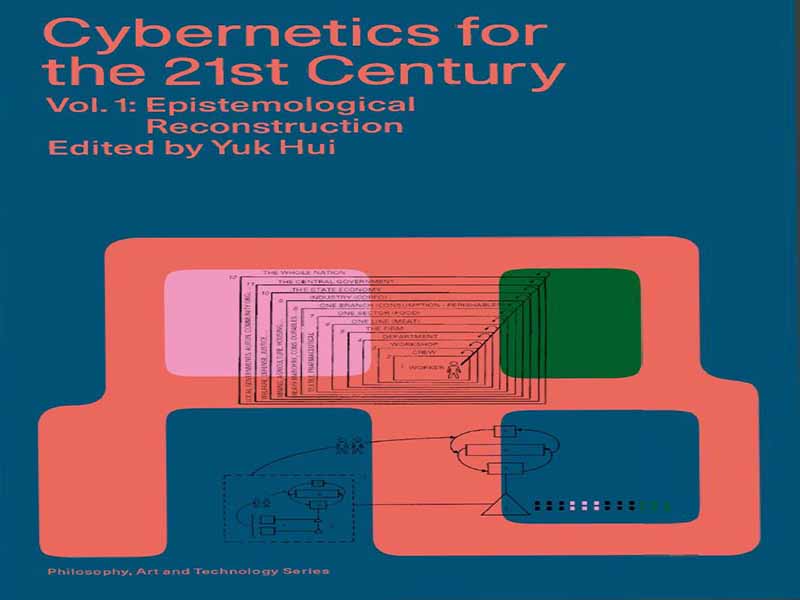- عنوان کتاب: Cybernetics for the 21st Century, Vol. 1 – Epistemological Reconstruction
- نویسنده: Andrew Pickering, Katherine Hayles
- حوزه: سایبرنتیک
- سال انتشار: 2024
- تعداد صفحه: 269
- زبان اصلی: انگلیسی
- نوع فایل: pdf
- حجم فایل: 16.3 مگابایت
عنوان «سایبرنتیک برای قرن بیست و یکم» ممکن است بلافاصله این سوال را ایجاد کند: چرا سایبرنتیک، و چرا حالا؟ همانطور که کاترین هایلز اشاره میکند، تا دهه 1970 به نظر میرسید که اصطلاح سایبرنتیک از گفتمان عمومی ناپدید شده است. اصطلاح «سایبرنتیک» توسط نوربرت وینر در دهه 1940 به عنوان نتیجه همکاری او با آرتورو روزنبلوث و گروه تحقیقاتیاش ابداع شد. میدانیم که این اصطلاح از کلمه یونانی kubernetes سرچشمه میگیرد و در سال 1834، آندره ماری آمپر اصطلاح سایبرنتیک را برای هنر آینده حکومتداری تعیین کرد. این اصطلاح از طریق کتاب مهم او با عنوان «سایبرنتیک، یا کنترل و ارتباط در انسان و حیوان» (1948) که به پاس قدردانی از همکاری طولانی مدت آنها به روزنبلوث تقدیم شده بود، شهرت بینالمللی بیشتری پیدا کرد. در دهههای بعد، سایبرنتیک به علمی تعمیمیافته تبدیل شد که میتوانست تحلیلی نظاممند و تکاملی از هر پدیدهی معینی ارائه دهد، چه خودسازی هومبرتو ماتورانا و فرانچسکو وارلا باشد و چه نظام اجتماعی نیکلاس لومان. این تحول، از دورهی کنفرانسهای میسی (1946-1953) تا دورهی پس از کنفرانس میسی، بهطور گسترده بهعنوان تغییر از سایبرنتیک مرتبهی اول به سایبرنتیک مرتبهی دوم شناخته میشود. در اینجا میتوانیم تغییر واژگان – از بازخورد به بازگشت – را تشخیص دهیم که خود را در همانگوییهای مختلف بیان میکند: سایبرنتیک سایبرنتیک، جامعهی جامعه، مشاهدهی مشاهده و غیره. همچنین میتوانیم تلاش برای پرداختن به پدیدهی پیچیدهی موجودات زنده را بیابیم که نیازمند واژهسازیهایی مانند «اتصال ساختاری» و «بسته شدن عملیاتی» است. این مقدمه قصد ندارد تاریخچه سایبرنتیک را بازگو کند – کتاب «چگونه پساانسان شدیم» اثر هیلز (1999)، «لحظه سایبرنتیک» اثر متیو تریکلوت (2008) و همچنین مجموعه مقالات کنفرانس میسی به ویرایش کلاوس پیاس (2016)12، متون کلیدی برای درک امواج مختلف سایبرنتیک بودهاند – در عوض، این مقدمه دعوتی است برای تأمل در مورد ارتباط سایبرنتیک با زمانه ما.
The title Cybernetics for the 21st Century may arouse an immediate question: Why cybernetics, and why now? As Katherine Hayles notes, by the 1970s the term cybernetics seemed to have disappeared from public discourse. The term ‘cybernetics’ was coined by Norbert Wiener in the 1940s as an outcome of his collaboration with Arturo Rosen- blueth and his research group. We know that the term originates from the Greek word kubernetes, and in 1834, Andre-Marie Ampere designated the term cybernetique for the future art of governance. The term gained even more international fame through his seminal book his seminal Cybernetics, or Control and Communication in Man and Animal (1948), which was dedicated to Rosenblueth in acknowledgement of their long-term collaboration. In the following decades, cybernetics rose to a generalized science which could provide a systematic and evolutionary analysis of any given phenomenon, be that Humberto Ma- turana and Francesco Varela’s autopoiesis or Niklas Luhmann’s social system. This development, from the period of the Macy Conferences (1946-1953) to the post-Macy Conference period, is widely recognized as a shift from first-order cybernetics to second-order cybernetics. We can identify here the change of vocabulary—from feedback to re- cursion—which expresses itself in different tautologies: cybernetics of cybernetics,1 society of society, observing observation, and so on. We can also find the effort to tackle the complex phenomenon of living beings, which demands neologisms such as ‘structural coupling’ and ‘operational closure’. This introduction does not aim to recount the history of cybernetics—Hayles’s How We Became Posthuman (1999), Mathieu Triclot’s Le moment cybernetique (2008) as well as the Macy Conference Proceedings edited by Claus Pias (2016)1 2, have been key texts for understanding different waves of cybernetics—instead it serves as an invitation to reflect on the relevance of cybernetics to our times.
این کتاب را میتوانید از لینک زیر بصورت رایگان دانلود کنید:
Download: Cybernetics for the 21st Century, Vol. 1




































نظرات کاربران